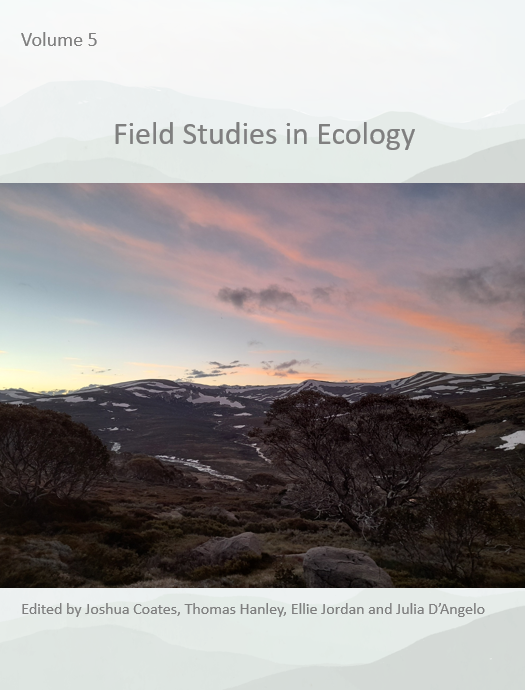Investigating the impact of soil moisture on the thermal tolerance of alpine Ranunculus species and hybrids in Kosciuszko National Park, Australia.
Main Article Content
Keywords
Critical temperature, thermal plasticity, thermal tolerance breadth, chlorophyll fluorescence, soil moisture.
Abstract
Escalating extreme temperature events significantly impact organisms, driving species selection and adaptation. To predict global species distributions in a warmer future, understanding differences in metabolic temperature tolerance and plasticity is crucial. Chlorophyll fluorescence can be used to measure critical temperature of photosynthetic heat tolerance (PHT) in plants. The upper (CTmax) and lower (CTmin) critical temperature, as well as the difference between these two limits, the thermal tolerance breadth (TTB), were measured for five Ranunculus species and four hybrid types, using a high-throughput chlorophyll fluorescence imaging method and apparatus. This study compares PHT between species and hybrids and analyses the correlation of PHT to soil moisture to gain insight into how local microclimatic factors and hybridisation might allow vulnerable species to leverage adaptive traits. Our results show very significant differences between the CTmax, CTmin and TTB of species, with hybrids often having intermediate values between their parent species. The correlation between soil moisture and CTmin was negative and significant, while the correlation with CTmax and TTB were both slightly positive, but not significant. Soil moisture marginally increasing thermal tolerance indicates that small pockets with higher soil moisture than the surrounding landscape (such as gullies and intermittent stream beds) may become increasingly important for the persistence of Ranunculus populations. This is concerning, given predictions of a drier climate in the future, especially for those species identified as having comparatively lower thermal tolerance. This study demonstrates how plant physiological measurements could aid in the identification of species that are more at risk of climate induced range shifts or local extinction and assist with setting conservation priorities.

